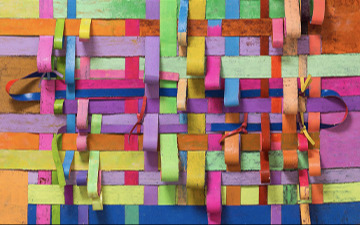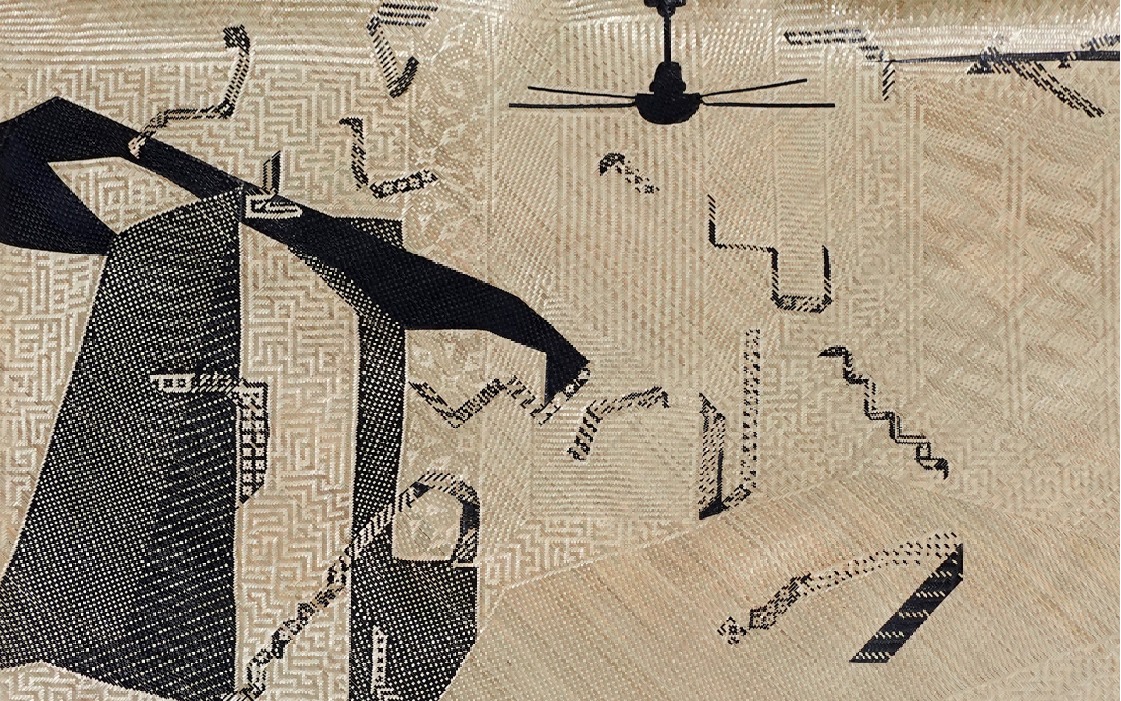
Aichi Triennale: STILL ALIVE
Mit Jai Inn & Yee I-Lann
Curated By Mami Kataoka
Arimatsu, Nagoya City
About
Artistic Director: Mami Kataoka
In the post-COVID-19 era, the question of how we might recover a sense of daily life and socio-economic activity in order to build a sustainable and more equitable world is an urgent one that the entire world will face. 2022 will be a period of recovery from this pandemic, during which we will see new propositions being called for from all domains of life, whether environmental, political, economic, or cultural, in order to address the structures of contemporary society that have been thrown into sharp relief by COVID-19. The act of confronting this reality and creating a future amid uncertainty, during this particularly barren and unpromising period, is also an obligation that is being demanded of all of us who live in the present time.
Art, including contemporary art and the performing arts, has always reflected the times, pursued the truth, and proposed new values for the future in the face of uncertainty throughout its history. Since the 1990s, Western-centric values have branched off in multiple directions. In today’s increasingly complex world, we are seeing an increasing emphasis on the qualities of diversity and inclusion, which demand understanding and respect for diverse cultures. In particular, the vulnerability of our social structures as exposed by the pandemic has had a profound impact on the work of artists and art institutions, while the international art community has been demonstrating its solidarity in confronting social issues such as discrimination and inequality, in an effort to seek out models for a sustainable world.
The theme of Aichi Triennale 2022, “STILL ALIVE,” was inspired by a series of works entitled I Am Still Alive by the Aichi-born conceptual artist On Kawara, who continually dispatched the fact of his own existence during his lifetime using telegrams starting in the 1970s. This international art festival to be held in 2022 will offer a multi-dimensional interpretation of the words “STILL ALIVE,” revisiting the origins and sources of contemporary art while also focusing on the gaps between domains that have come to be classed according to fixed categories, all the while shuttling back and forth between the past, present, and future. Through the medium of art, Aichi Triennale 2022 promises encounters with uncertainty, the unknown, a diversity of values, and overwhelming beauty, while also serving as an opportunity for thinking about how we can create an ideal, sustainable future together. COVID-19, on the other hand, has curtailed transnational activities and projects, and directed our attention to the regions where we actually live and work. In terms of “regional rediscovery,” one of the distinctive characteristics of art festivals held in different cities, Aichi Triennale 2022 will also incorporate the proud history, local industries, and traditional culture of Aichi Prefecture, exploring the question of how to rejuvenate and revive these elements by taking the present time as a starting point, while also promising to be a creative response to the question of how to connect local cultures around the world to a wider global context.
Mit Jai Inn's (b. 1960, Chiang Mai; lives and works in Chiang Mai, Thailand) paintings come into being in his outdoor Chiang Mai studio, where he gives turns to the vibrating spectrum of sun and moonlight, with nocturnal interludes under white fluorescent. His colour-based, densely layered work defies conventional boundaries of painting, while variously enacting its multiple histories and treatments. Mit’s practice is, on the one hand, rooted in a rigorous physicality of both manual and optical labour. His studios’ multiple workstations show evidence of crushing and mixing colour of his own making, of plotting, pulling and pushing, overlaying, and scraping pigment. Canvases, often treated on both sides, stretch across floors, drape from tables and hang from metal beams. In place of brushes, mark makers are palette knives, hands, and fingers.
Several of his early experiences remain influential to him, including the communal and aesthetic aspects of being raised in an Indigenous Yong weaving village, a meditation and political practice drawn from six years as a Theravada Buddhist monk, and the labor and endurance of training two years as a professional Muay Thai boxer. Mit then studied art at Silpakorn University, Bangkok (1982-1986) and continued studies at the University of Applied Arts, Vienna (1987-1992), during which time he worked as assistant to artist Franz West. Returning to Chiang Mai in 1992, Mit initiated social and politically focused art initiatives, including as co-founder of Chiang Mai Social Installation (1992-), as well as involvement with Midnight University and The Land Foundation – three non-institutional projects central to Thai contemporary art practice and discourse. In 2015, Mit also founded Cartel Artspace in Bangkok, a gallery offering space to artists reflecting on Thailand and Southeast Asia’s historical and current context. Mit’s recent exhibitions include: Actants, Silverlens, Manila; Encounters, Art Basel Hong Kong; SUNSHOWER: Contemporary Art in Southeast Asia from 1980s to Today, Mori Art Museum and Kaohsiung Museum of Fine Arts; and SUPERPOSITION: Equilibrium and Engagement, The 21st Biennale of Sydney.
Yee I-Lann (b.1971, Kota Kinabalu; lives and works in Kota Kinabalu in the Malaysian Borneo state of Sabah) primarily photomediabased practice engages with archipelagic Southeast Asia’s turbulent history with works addressing issues of colonialism and neo-colonialism, power, and the impact of historical memory in social experience, often with particular focus on counter-narrative “histories from below”. She employs a complex, multi-layered visual vocabulary drawn from historical references, popular culture, archives, and everyday objects. She has in recent years started working collaboratively with sea-based and land-based communities and indigenous mediums in Sabah. She is a co-founding associate of The Ricecooker Archives: Southeast Asian Rock ’n’ Roll Treasury with her partner Joe Kidd and has worked as a production designer in the Malaysian film industry. She is currently a Board member for Forever Sabah and Tamparuli Living Arts Center (TaLAC), both based in Sabah.
I-Lann has worked in art department and as a production designer in the Malaysian film industry since 1994 and between 2003-2008 established the production design department and lectured at Akademi Seni Budaya dan Warisan Kebangsaan (ASWARA). With her partner, rock n roll subculture archivist, musician and designer Joe Kidd they share KerbauWorks a cross-discipline project label and space. She is currently a Board member for Forever Sabah and Tamparuli Living Arts Center (TaLAC), both based in Sabah and a co-founding partner of KOTA-K Studio in Tanjung Aru Old Town, Kota Kinabalu.
The Aichi Triennale is an urban international art festival, held every three years since 2010 across a wide region including the Aichi Arts Center and other city venues, and preparations are underway for Aichi Triennale 2022 to build on the achievements of the previous four iterations. The festival will span a wide range of fields, synthetically exhibiting performing art and other forms together with a contemporary art core, and make Aichi Prefecture a beacon of the artistic avant-garde.

